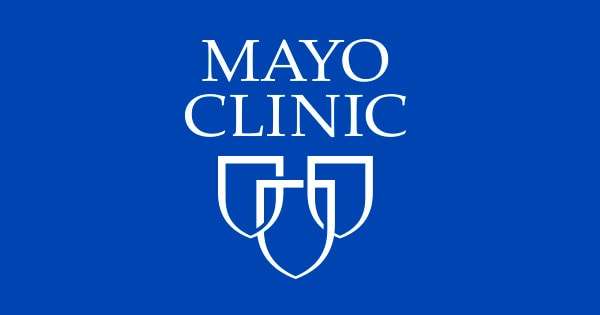How to use occupational therapy goals with your EMR
What are the different types and formats of occupational therapy goals?
Occupational therapy goals serve many purposes. One of those is to ensure a client is benefiting and progressing from their sessions. Occupational therapy goals also track client progress, in addition to identifying when a client is ready to take a break from therapy. These goals also help determine when a client requires additional services such as speech therapy, physical therapy, or behavioral health support.
What are the different types and formats of occupational therapy goals?
There are many different types and formats of occupational therapy goals. No matter what type of goal you are making, make sure to include the client in the goal writing process. By doing this, you can help your client feel empowered during the therapy process which will ultimately lead to better engagement in therapy and a better therapy experience for both you and your client.
Recommended
How to Write SOAP Notes for OTs
Why are occupational therapy goals important?
Occupational therapy goals are not just important for the therapist, but also for the client. If a client feels connected or inspired by their occupational therapy goals, they’re more likely to engage during sessions. When this happens, clients tend to get inspired by the therapy process which results in a higher chance they’ll attend and follow through with their occupational therapy sessions.
What is a SMART goal in occupational therapy?
SMART is a common type of goal used among many occupational therapists. SMART stands for Specific, Measurable, Attainable, Relevant, and Time Based. By using this acronym as a guide, you can ensure your goals contain all the relevant information necessary. SMART goals are also universally used and easy for you, your client, and any other medical professionals involved to understand.
What format should an occupational therapy goal follow?
Occupational therapists typically follow a standard format. There’s an overall long term goal, followed by multiple short term goals. These short term goals help the client reach their long term goal by making it more attainable.
What’s the difference between long term and short term goals?
When it comes to long term and short term goals in occupational therapy, there are a few things to consider.
-
A long term goal is typically more broad and highlights an overarching theme or goal for a client. Long term goals will typically have a time frame of six months to a year.
-
A short term goal supports the long term goal. They’re generally more specific than a long term goal, and there will typically be multiple short term goals supporting a long term goal. Unlike a long term goal, short term goals can typically be achieved in one to three months.
Long term occupational therapy goal examples
For more clarity on what a long term occupational therapy goal looks like, we’ve created some examples below.
-
Client will get dressed independently with 90% accuracy in ⅘ trials.
-
Client will be able to hold a pencil with a developmentally appropriate grasp and write their name independently with 80% accuracy in ⅘ trials.
-
Client will be able to don their lower extremity clothing including their socks and shoes, while following hip precautions with 100% accuracy in ⅘ trials.
-
Client will demonstrate developmentally appropriate engagement with their sibling, without aversion 80% of the time, in ⅘ trials.
Short term occupational therapy goal examples
Short term goals are worked on to help the client achieve their long term goals. Some examples may include:
Long term goal: Client will get dressed independently with 90% accuracy in ⅘ trials.
- Short term goal:
Client will don a pullover shirt with moderate assistance with 80% accuracy in ⅘ trials.
- Short term goal:
Client will don a pair of pants with maximum assistance with 80% accuracy in ⅘ trials.
Long term goal: Client will be able to hold a pencil with a developmentally appropriate grasp and write their name independently with 80% accuracy in ⅘ trials.
- Short term goal:
Client will complete fine motor strengthening activities to improve their hand strength, with minimal assistance with 80% accuracy in ⅘ trials.
- Short term goal:
Client will hold a pencil with a developmentally appropriate grasp and imitate vertical and horizontal lines with minimal assistance with 80% accuracy in ⅘ trials.
Long term goal: Client will be able to don their lower extremity clothing including their socks and shoes, while following hip precautions with 100% accuracy in ⅘ trials.
- Short term goal:
Client will don a pair of pants with a long handled reacher while following their hip precautions with 100% accuracy in ⅘ trials.
- Short term goal:
Client will don a pair of socks with a sock aid while following their hip precautions with 100% accuracy in ⅘ trials.
Long term goal: Client will demonstrate developmentally appropriate engagement with their sibling, without aversion 80% of the time, in ⅘ trials.
- Short term goal:
Client will engage in parallel play near their sibling, without aversion 50% of the time, in ⅘ trials.
- Short term goal:
Client will share an item with their sibling for 1 minute, without aversion, in ⅘ trials.
How to use occupational therapy goals with your EMR
Once you have made your occupational therapy goals for your client, it’s easy to add them to your EMR. When adding goals to an occupational therapy treatment plan, it’s helpful to first add your long term goals, and then your short term goals after. By formatting your goals this way, it allows you to easily track your client’s progress and see what areas your client is progressing and what areas they may be having difficulty.
If you’ve been considering a fully integrated, HIPAA-compliant practice management software, try SimplePractice for a free 30 days. SimplePractice is the leading EMR with streamlined note-taking and hundreds of built-in templates that are fully customizable and easy to use. Plus, SimplePractice is consistently rated as one of the best software for occupational therapists and lets you conduct telehealth appointments, submit insurance claims, and process online payments.
Sign up for emails from SimplePractice
Goal writing in occupational therapy can be tough. Goal writing correctly and effectively can be even tougher. This is especially true when you’re an OT student or new grad occupational therapist.
This article will help simplify the goal writing process for the adult and older adult settings, such as inpatient rehab, subacute rehab, home health, and acute care.
These goal writing tips will hopefully make writing your goals a bit easier for those of you who have to write them free-hand, as opposed to checking boxes for pre-set goals, since many documentation systems don’t have the pre-set option.
Note: This method is how I write my goals, and these goals are examples of my typical goal writing style, but to play it safe, always be sure to first talk with your CI or rehab manager to determine how your individual setting prefers goals to be written.
For more on OT goal writing, be sure to also check out the Seniors Flourish goal writing guide, linked below. This 60 page guide focuses on helping you create measurable, client centered and attainable goals for your clients in any adult focused setting. Note: we may receive a small commission for this purchase at no additional cost to you, and we only recommend products that we use and love.
Get your copy of the OT Goal Writing & Goal Bank Guide!
First Tip: Write SMART Goals
You likely already know that both short term and long term goals need to be objective, measurable and realistic. There are many different formats you can use to make sure your goals include these components.
The SMART method of writing goals leads you through all of the necessities of the goals. This is a widely popular goal setting method in management and in almost every arena where goal-setting is an everyday part of life.

Writing Short Term and Long Term Goals
Short Term Goal Example
Your patient is currently Max assist at admission for toilet transfers in inpatient rehab, getting OT services 5x per week. A short term goal, focusing on ADL transfers, for this patient is as follows:
In 7 days, patient will transfer to toilet with Mod assist using DME as needed.
This short term goal is specific because we know exactly what type of transfer we are going to work on.
The level of improvement for a short term goal typically should not be written for more than one level of assist to ensure success. An example of this: If my patient is Max assist for toilet transfers at the evaluation, I will not write a short term/one week goal for the patient to be Min assist, instead I will set the goal for Mod assist for toilet transfers to be realistic.
The goal is measurable. We can test to see whether or not the patient is still requiring Max assist after the 7 day period or if they now only require moderate assist.
This is an achievable goal for a typical patient. With experience, you will gain a better feel for what is an achievable goal and what is not. If you are not sure if a goal is achievable, don’t be afraid to ask your manager or another experienced OT on site.
This goal is relevant to occupational therapy and to the patient because all patients in this situation ultimately want to be able to move around safely on their own during their self-care tasks.
The goal is time bound since the goal must be achieve within 7 days.
Long Term Goal Example
You can write a long term goal (this one is again based on a toilet transfer) by modifying the time and assist level.
By discharge, patient will transfer to toilet with Min A using DME as needed.
For long term goals, improvement is typically two levels of improvement for the assist, as seen in the above goal.
Another example: Your patient is Min assist for toilet transfer at evaluation, so you can set their long term goal to Modified Independent for their toilet transfer long term goal.
With any adult setting, you can upgrade the goals if your patient is meeting them early. To play it safe, I typically stick to the two-level rule and update the goals if/when the patient is exceeding them.
It is also very important to keep the patient’s goals functional and occupation-based. Functional goals may include toileting, toilet transfers, dressing (upper and lower body), and bathing-related goals (including tub or shower transfer if appropriate). I personally do not typically write strength/MMT goals in my acute care or inpatient rehab settings, but some therapists do include this along with a functional component.
Writing Higher Level IADL Goals
For higher-level IADL goals, you can incorporate a meal prep goal, medication management goal, or a community re-entry goal if these IADLs are relevant to your patient.
The community re-entry goal will depend if outings can be facilitated at your location. Your facility will likely have their own preference, and you can learn a lot from looking at your OT coworkers’ goals.
Patient goals should always relate to what will benefit your patient the most and help them achieve their highest level of independence.
Lastly, don’t forget to ask your patient for ideas of what they want to achieve. This will help to make your intervention plan client-centered and the most helpful plan for your patient.
_______________
Do you have any additional occupational therapy goal writing tips you would add? Please feel free to share them in the comments below!
Get your copy of the OT Goal Writing & Goal Bank Guide!
Looking for more OT Goal Writing resources? Be sure to check these out!
Adult OT Goal Bank (My OT Portfolio)
Writing Measurable Short and Long Term Goals (Clinical Webinars for Therapy)
Documentation Writing Orientation (Holsman Healthcare)
This post was originally published on February 1, 2016 and was updated on September 2, 2019 and March 30, 2022.



